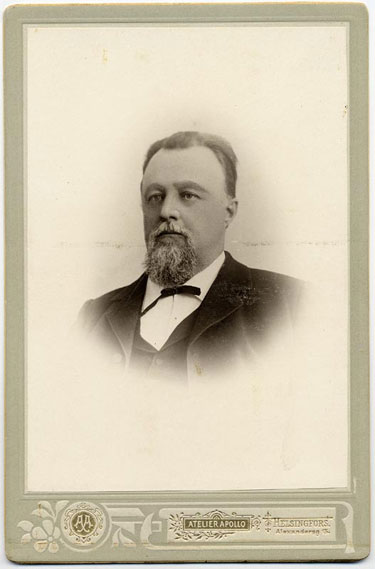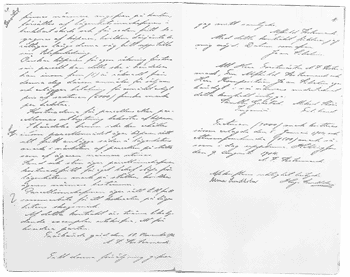From the time of their engagement Aino and Jean Sibelius had been dreaming of a cottage of their own. Sometimes the cottage was supposed to be "in the country", sometimes "in the backwoods" or "on the shore of a lake". The first time that the composer tried to find a house on the shore of Lake Tuusula was in December 1898. The novelist Juhani Aho had moved there in 1897 and the painter Pekka Halonen in 1898. The woman who owned the Vanhakylä estate refused to rent an apartment to someone who had appeared "in such a painting as the one of the Symposion by Axel Gallén (later Akseli Gallen-Kallela)". Tunnetussa taulussa taiteilijat istuvat pullojen täyttämän pöydän äärellä.
Maalla asumista kokeiltiin Keravalla, Mattilan talossa 1899-1902. From 1902 until 1904 they lived in Helsinki, but the temptations of the city hindered composition. Friends such as Axel Carpelan appealed to the composer, begging him to move back to the country. Sibelius described the disadvantages of the city in indirect terms: "In Helsinki all the song inside me died."

Axel Gabriel Borg (1845-1903)
In July 1903, the family's prospects of moving into a house of their own in the countryside became brighter, when Sibelius's uncle, the wealthy bachelor Axel Borg died. The village of Järvenpää was now more attractive, since Aino's brother, the painter Eero Järnefelt, had moved there with his family. The architect Lars Sonck promised to plan the house.On 18th November 1903 Sibelius bought from Alfhild and Anton Walter Westermarck a building site of 0.74 hectares in the lands of the Kyrölä family estate in the village of Järvenpää, in Tuusula parish. The purchase price was high: 4,500 marks (about 15,500 euros today). He had the right to use the road leading to his land and permission to take a telephone line through the Kyrölä estate. Sibelius did not get a lakeside site, but the Westermarcks arranged for the family a berth on the shore of the lake and gave permission to use the beach for swimming. It was also possible to buy additional land from the surrounding Kyrölä estate. For this, too, the price was high: 6,000 marks per hectare (over 20,000 euros today).
 Becoming a home-owner was a hazardous undertaking. In the summer of 1903 Sibelius's debts amounted to over 80,000 euros in today’s money, which was counterbalanced by an assured yearly income of 10,000 euros. In November he raised a loan of 60,500 euros, two thirds of which was a mortgage loan against the Ainola site. The remaining third consisted of a bill guaranteed by Renlund and Fazer. In the end, Sibelius's share of Axel Borg's estate was only sufficient to cover the fees of Lars Sonck, the architect.
Becoming a home-owner was a hazardous undertaking. In the summer of 1903 Sibelius's debts amounted to over 80,000 euros in today’s money, which was counterbalanced by an assured yearly income of 10,000 euros. In November he raised a loan of 60,500 euros, two thirds of which was a mortgage loan against the Ainola site. The remaining third consisted of a bill guaranteed by Renlund and Fazer. In the end, Sibelius's share of Axel Borg's estate was only sufficient to cover the fees of Lars Sonck, the architect.

